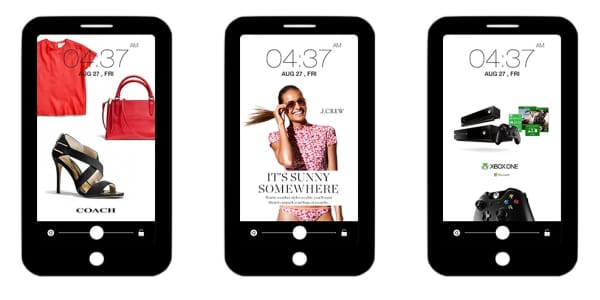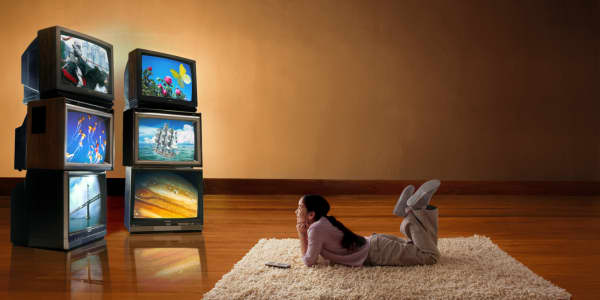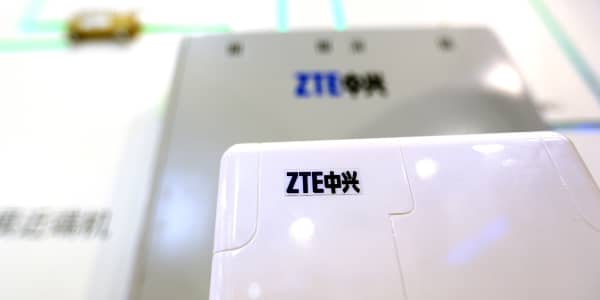After a week of looking over the latest smartwatches, fitness bands and selfie phones at Mobile World Congress (MWC) in Barcelona, tech-watchers are trying to predict the next big trend.
And for now, wearables seem the way to go.
Yet the tech world is littered with ideas that have failed to make the grade. And it is their quirkiness – rather than their usefulness – that has hindered their chances of success.
Warren Tucker, managing director of networks at Accenture, said that when approaching a new product, companies had to be clear about one thing.
"What a lot of the companies need to bear in mind is the business case: what is the value basis for what it is they're trying to develop?" he told CNBC at MWC. "Can I pick one (idea) that hasn't worked? I can probably pick loads, because they haven't been solving business problems."
(Read more: Wearable tech: a victim of its own hype?)
Take for example, 3D phones, where you didn't need to wear any glasses.
"LG placed a huge bet on glasses-less 3D screen mobile phones but the experience never cut it and consumers voted with their feet," said Ben Wood, chief of research at CCS Insight. "The technology was quietly discontinued after a couple of attempts."
Wood also cited Nokia, once the king of the mobile. "In a desperate quest for differentiation, manufacturers try new approaches to the keypads on phones. Nokia implemented a round keypad on its 3650 which consumers found almost unusable."
Gender-specific phones may also be considered a no-no. The Nokia 7280 phone was a dubbed the "the lipstick phone," and while it was not necessarily geared for women, its name - along with it having no number pad - did not attract customers.
Similarly, the Rong Zun 758 Razor Phone, was - as the name suggests - a phone that had a razor at the bottom edge of the device, perfect for a quick shave before an important call.
Such quirky products are still being sold today. At MWC, Oral B launched a new app-controlled bluetooth toothbrush to help you make sure we all brush our teeth properly as well as "personalizing" our brushing experience. This latest technology was reviewed by Quartz under the headline: "Here's That $200 Internet Toothbursh No One Asked For."
(Read more: Samsung branches out as smartphones reach saturation)
Who uses QR codes?
When breaching the topic of trends that failed to spark the collective imagination, many analysts point to Quick Response, or QR, codes and NFC - Near Field Communication.
QR codes are barcodes that can be read by an imaging device,such as a camera on your smartphone, and will take you through to more information about what the code is promoting.
According Francisco Jeronimo, research director, European mobile devices, at intelligence firm IDC, "The valuable position is quite high, but the experience and visibility is not that great. How many people know that they need to download an application to use the QR code?" he told CNBC in a phone interview.
He argued that users would still rather type in the URL anyway. "If I want to find out about a brand, I pick up my phone and type in the URL and that's it. I don't need to point my phone at something and get the same information. That's the problem. What's the additional value that the technology gives me?"
Perhaps NFC is easier, an in-built system on smartphones that allows one phone to send a small amount of data to another phone nearby. This can even mean using your phone for payment.
NFC has underperformed, according to many, with consumers finding it difficult to find places offering NFC as a payment method. "I've never used it," Jeronimo said, highlighting the fact that Apple has resisted putting NFC in its phones.
(Read more: An app with the perfect plan)
However, Wood from CCS Insight countered, "Both are alive and well in my opinion. It's just going to take time." Market research firm IHS recently estimated in a report that NFC-enabled mobile phone shipments reached 275 million units last year, up 128 percent from the estimated 120 million shipped in 2012.
Of course, Wood is right about "time." Some ideas that are now popular were first thought of years ago but did not gain popularity at the right time, meaning that some criticism of the popularity of wearable tech may be misplaced. It may be too early to tell.
David Heard, president of the Network and Service Enablement business segment at JDSU, told CNBC at MWC, "When I was at AT&T Bell Laboratories, when we were first putting out cellular, one of the guys back in the lab built a Dick Tracy watch that was a mobile on a watch. Now how many years ago was that?
"Now you're seeing wearables. How long will it take for that to really become mainstream? I don't know."
—By CNBC's Kiran Moodley. Follow him on Twitter @kirancmoodley




